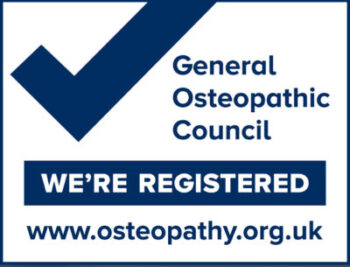Our approach is to identify and address the root cause of a complaint, rather than to just treat the symptoms; which means not only are your pain and symptoms more likely to be relieved, but they are also less likely to return.
Osteopathy is suitable for the whole family from babies and children at all stages of development, through to the elderly and associated conditions, as well as postural problems caused by pregnancy, work strain, driving, or sports injuries in adults.
Your first visit will take up to 45 minutes and will include a full medical assessment. We discuss the reason you’ve come to see us, your general health and medical history and your day to day routine such as diet, exercise and what is happening in your life. We will then ask you to undress down to your underwear so that we can examine and assess your posture and movements fully (please feel comfortable to bring shorts).
Once we are confident with a diagnosis based on the findings of our examination, your individual treatment plan will be discussed with you. If you require further medical investigation such as scans or blood tests, we will refer you to your GP or another appropriate medical professional.
Osteopathic treatment is tailored to you as an individual and is suitable for the whole family, including elderly, babies and children at all stages of development.
The main aim of osteopathic treatment is the reduction of pain and facilitation of healing. Treatment involves gentle, manual techniques – easing pain, reducing swelling and improving mobility. Your osteopath may also provide advice on posture and exercises to aid recovery, promote health and prevent your symptoms recurring.
Osteopathic medicine is a system of diagnosis and treatment for a wide range of medical conditions that recognises much of the pain and disability we suffer stems from abnormalities in our body’s structure and function. We seek to restore the optimal functioning of the body and aid its intrinsic ability to heal.
To qualify, an osteopath must study for four to five years for an undergraduate degree. This is similar to a medical degree, with more emphasis on anatomy and musculoskeletal medicine and includes more than 1,000 hours of training in osteopathic techniques.

